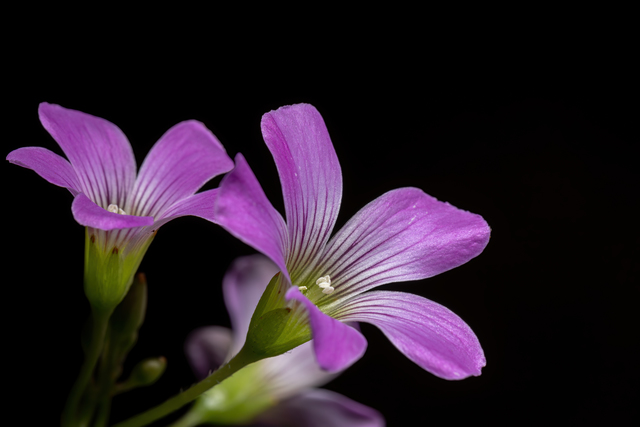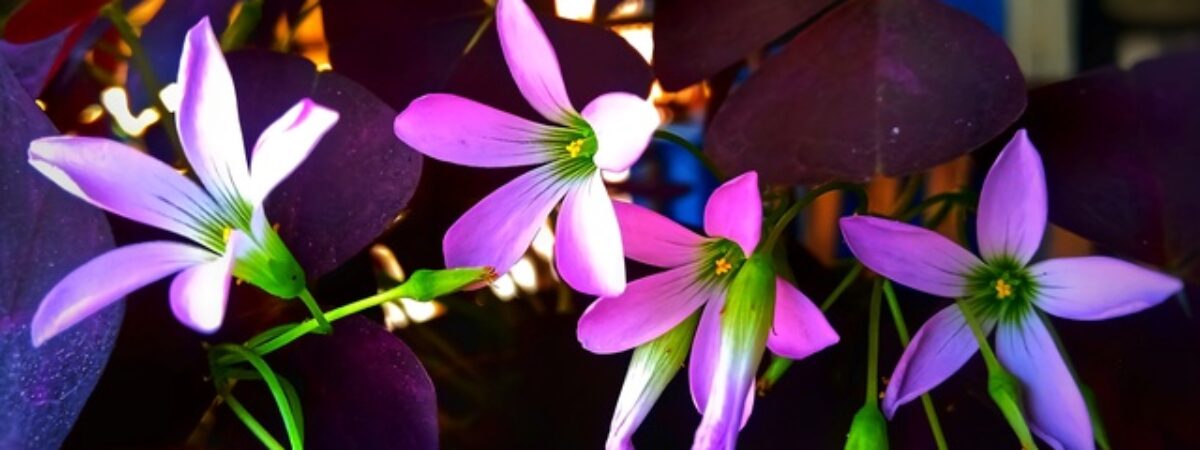Oxalis triangularis is one of the best low maintenance houseplants that are available in various sizes and colors and also they are plentiful.
Oxalis triangularis belongs to the genus oxalis that is one of the highest cultivated among the family Oxalidaceae or the wood sorrel family. They belong to tropical climates of South America and South Asia.
There are some interesting facts about Oxalis triangularis. Oxalis triangularis is also called ‘Purple Shamrock’ due to its beautiful dark purple color foliage.
Purple Shamrock is named triangularis owing to its triangle-shaped leaves in a deep purple hue, along with a lighter purplish-rose pattern in the center.
Along with these beautiful leaves, Oxalis triangularis also produces pink or white trumpet shaped flowers during spring.
These are summer annuals and are best grown in mild climates. It is quite attractive whether you grow it indoors or outdoors possessing striking purple leaves that are definitely the star of the show.
Oxalis triangularis has another name apart from ‘Purple Shamrock’ called ‘False Shamrock’ because of its resemblance to clover that belongs to trifolium genus. Click To TweetOxalis triangularis has another name apart from ‘Purple Shamrock’ called ‘False Shamrock’ because of its resemblance to clover that belongs to trifolium genus.
The only difference between clover i.e. true shamrock and false shamrock (Oxalis triangularis) is that true shamrocks can’t grow indoors and they have fibrous root systems whereas false shamrocks have tuberous root systems and can be grown indoors.
Another fascinating property is that its leaves and flowers close at night, then open again during the day. It is called Nyctinasty or Photonasty.
Nyctinasty basically means rhythmic circadian nastic movement of plants that respond to darkness. Similarly Photonasty means responding towards light.

Growing Guide
Sunlight
Though Oxalis triangularis requires enough light, it will not grow properly in direct light. It grows well in bright light conditions.
If you are growing it indoors then a north or east-west facing window will be beneficial for the growth of Oxalis triangularis.
Water
The Oxalis triangularis plant needs a medium moist environment. So it’s better to water the plants once every two weeks.
There should be enough drainage in the pot so that the soil remains moist, not wet. When there is bright light more watering is needed and when there is low light, less watering is enough.
Always allow the upper layer of soil i.e 2.5 cm to dry out completely before next watering. Overwatering is harmful for them especially during their dormant period.
Temperature and Humidity:-
Oxalis triangularis plants do not prefer too high or too low temperatures. They thrive better in medium temperatures. A temperature of 65°F-85°F (18°C-30°C) is required for the plant to grow.
If temperature persists to be in 27 degree celsius then the plant may go dormant. This plant can tolerate normal humidity. They can’t thrive in dry air.
Soil
The Oxalis triangularis plant will grow well in potting mix soil with good drainage conditions. Organic soil mixed with perlite will work wonderful for the plants to grow.
Fertilization
If you are using a potting mix soil then fertilizing is not necessary for the first few months. It’s better to use plant food that contains all the necessary nutrients required for the plants to grow healthy.
During the flowering period, potassium fertilizer is necessary for better flower blooming. Fertilize your plants during spring and summer as in winter these plants go to dormant stage.
Always use a water soluble fertilizer for better absorption of nutrients by Oxalis triangularis. Don’t over fertilize the plant as it will lead to salt accumulation, hence timely drainage is essential.
Dormancy period
Usually the Oxalis triangularis plant goes into dormant phase during winters. Dormancy is a period when basically plants go to deep sleep that helps them to get charged up for next growth.
You will notice that your Purple Shamrock will develop brown and dry leaves then don’t panic, this means that your plant has entered into dormant phase.
You need to take some precautions such as placing the pot in a dark room for two weeks and stop watering and fertilizing the plants. Click To TweetYou need to take some precautions such as placing the pot in a dark room for two weeks and stop watering and fertilizing the plants.
After the dormant phase gets over, place the plant in bright light conditions and resume the watering and fertilizing of the plants to get them back stronger than before.
Potting and Repotting of Oxalis triangularis
Being an easy-growing house plant Oxalis triangularis, can be grown in any type of container. Use a container that has enough drainage.
It is better to use a potting mix soil that is light enough and can drain well. Plant the bulbs 1-1.5 inches deep in the soil and water it.
Place the pot in an indoor location where bright light falls through the window. A new growth occurs in about 2 weeks.
During the initial period water the bulbs and gradually reduce it when they grow, but remember to keep the soil moist.
This plant doesn’t need frequent repotting but it’s better to repot them when they enter dormancy.

Problems
Rust
This is a common problem often seen in these plants. You can use copper sulfur powder or it is better to cut the part and wait for regrowth.
Burnt leaves
This is caused due to over exposing your plant to direct Sunlight. So it is better to avoid direct light and place them where indirect bright light falls.
Toxicity
Oxalis triangularis can be eaten, but in a limited quantity as it tastes bitter to humans. However this plant is toxic to animals. So keep the plant away from pets and small children.
Conclusion
So now that you have read so far about this wonderful easy going indoor plant, I hope you must have got an idea on how to grow this plant indoors.
Oxalis triangularis are beautiful and unique houseplants that don’t require much maintenance. Hence , try your hands to grow this colorful plant in your own space and enjoy its beauty.
You may also like to read
How to Plant, Grow and Care for Goldfish Plants – A Complete Guide
Christmas Cactus – How to Propagate and Care for Christmas Cactus?






